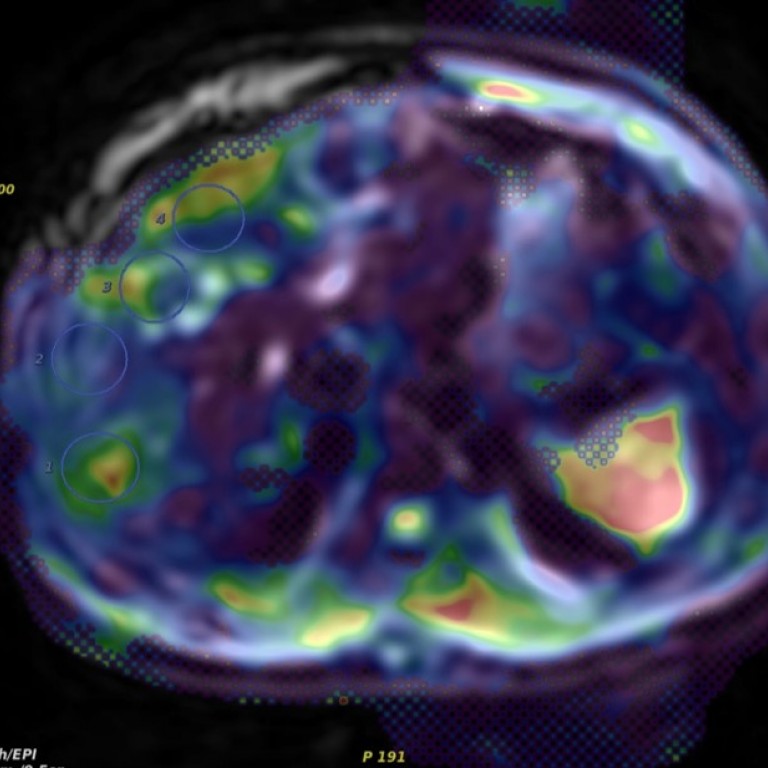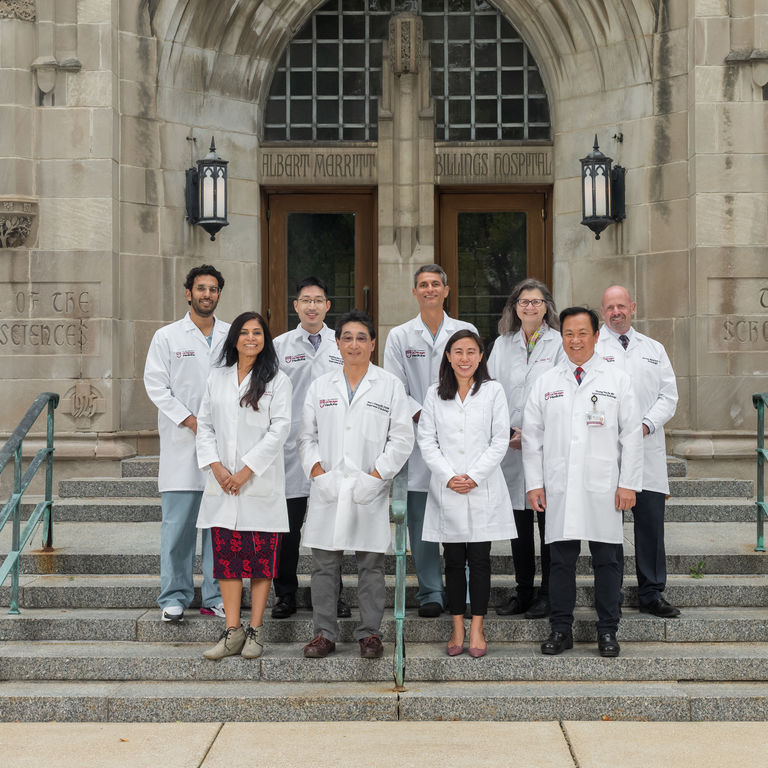As part of its COVID-19 response efforts, the Department of Radiology is conducting the following research. Please read below for a summary of each research project.
- High-throughput systems for sterilization of N95 masks using UV radiation
Patrick La Riviere, Ph.D. and medical physics graduate student Talon Chandler from the Department of Radiology are contributing to a project developing high-throughput systems for sterilization of N95 masks using UV radiation. The project is spearheaded by Peter Eng, a senior scientist at the University’s Consortium on Advanced Radiation Sources and beamline scientist at Argonne’s Advanced Photon Source. The project seeks to use readily available UV light tubes assembled in an array that can irradiate multiple masks simultaneously and allow sterilization of over 400 masks per hour. La Riviere and Chandler performed mathematical and computational modeling of the UV irradiance that would reach different points on the mask surface as a function of various design parameters and helped optimize the final geometry of the system.
- Medical Imaging Domain-Expertise AI for Interrogation of COVID-19
Maryellen Giger, Ph.D., Jonathan Chung, M.D., Samuel Armato, Ph.D., Hui Li, Ph.D. from the Department of Radiology along with medical physics graduate students Jordan Fuhrman and Isabelle Hu, are collaborating with scientists from Argonne National Lab and from China to focus their medical imaging computer vision & machine learning expertise to develop AI for chest radiographs and thoracic CT of COVID-19. The COVID-19 pandemic represents a pressing, important public health need for computational techniques to augment the interpretation of medical images in their role for (i) surveillance and early detection of COVID-19 resurgence via monitoring of medical imaging data, (ii) detection, triaging, and differential diagnosis of COVID-19 patients, and (iii) prognosis, including prediction and monitoring of response, for use in patient management. While thoracic imaging, including chest radiography and computed tomography (CT), are being re-examined for their role in patient management, the limitations for improved interpretation are partially due to the qualitative interpretation of the images, and thus we aim to develop artificial intelligence methods to aid in the interrogation of medical images from COVID-19 patients. We are drawing on our decades of AI development of medical images to approach the current tasks to quantify and explain the COVID-19 presentation on imaging.
- Detection and monitoring of pulmonary abnormalities in COVID-19 patients with dual energy portable x-rays
Jonathan H. Chung, MD and Ingrid Reiser, PhD from the Department of Radiology are investigating a dual energy detector with a conventional portable x-ray unit for detecting and monitoring COVID-19 lung disease. Currently, the recommended modality for imaging of COVID-19 positive patients is portable chest x-ray (CXR) because it substantially reduces the risk of exposure by eliminating the need to transport the patient, and the relative ease of hardware disinfection, compared to CT. However, because of the bony rib structures overlaying the thorax, diagnostic utility for detecting and follow-up of subtle lung disease is poor. Indeed, early data suggests that standard portable radiography has limited sensitivity in COVID-19 patients (33%-69%). Dual energy chest x-ray (DE-CXR) has been shown to be able to detect pulmonary abnormalities including consolidation and ground glass opacities that are frequently observed in COVID-19 patients. However, to date, no commercial portable x-ray system produces dual energy images. We have teamed up with a startup, KA imaging, to combine their novel stand-alone dual energy detector with a conventional portable x-ray unit, which produces a bone-removed soft-tissue image in addition to the standard chest x-ray. As a first step towards a safe and effective method for detecting and monitoring COVID-19 lung disease, we propose to conduct a trial to determine the sensitivity of DE-CXR for detecting PCR-positive (or other similar FDA-approved assay) COVID-19 lung disease. This would be the first proof of concept step before investigating the utility of this technology in directing therapy and determining outcomes in those with COVID-19.





